
Todd Harry Rundgren is an American musician, singer, songwriter, and record producer who has performed a diverse range of styles as a solo artist and as a member of the bands Nazz and Utopia. He is known for his sophisticated and often unorthodox music, his occasionally lavish stage shows, and his later experiments with interactive art. He also produced music videos and was an early adopter and promoter of various computer technologies, such as using the Internet as a means of music distribution in the late 1990s.

A Wizard, a True Star is the fourth studio album by American musician Todd Rundgren, released on March 2, 1973, by Bearsville Records. It marked a departure from his previous album, Something/Anything? (1972), featuring fewer straightforward pop songs, a development he attributed to his experimentation with psychedelic drugs and his realization of "what music and sound were like in my internal environment, and how different that was from the music I had been making."

Todd is the fifth studio album by American musician Todd Rundgren, released in February 1974 on Bearsville Records. It is the follow-up to the previous year's A Wizard, a True Star and features a comparatively heavier reliance on guitar playing and synthesizers. About half of the tracks were performed by Rundgren alone, with the other half recorded with varying configurations of musicians. In the US, the album peaked at number 54, while lead single "A Dream Goes On Forever" reached number 69.

Initiation is the sixth album by American musician Todd Rundgren, released May 23, 1975 on Bearsville Records. With this album, Rundgren fully embraced the synthesized prog sound he had begun exploring in more depth in his work with his band Utopia. However, unlike Utopia, in which Rundgren had limited himself to playing guitar, much of the synthesizers on Initiation were played and programmed by Rundgren himself.

Hermit of Mink Hollow is the eighth album by American musician Todd Rundgren, released May 1978 on Bearsville Records. All of the instruments and vocals were performed by Rundgren. He intended the songs on the album to be performed on piano with minimal arrangements, apart from the bass, drums and voices, and for the material to showcase his newly refined singing ability.

Faithful is the seventh studio album by Todd Rundgren, released in May 1976.

A Cappella is a 1985 album by Todd Rundgren. The album is one of Rundgren's most unusual in that every sound is the product of the artist's voice. Rundgren employed overdubbing techniques and an E-mu Emulator, electronically manipulating the sound of his voice to mimic conventional rock instruments, handclaps, and other sounds. This approach to music making was later explored by artists such as Mike Patton and Björk.
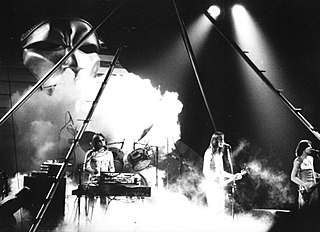
Utopia was an American rock band formed in 1973 by Todd Rundgren. During its first three years, the group was a progressive rock band with a somewhat fluid membership known as Todd Rundgren's Utopia. Most of the members in this early incarnation also played on Rundgren's solo albums of the period up to 1975. By 1976, the group was known simply as Utopia and featured a stable quartet of Rundgren, Kasim Sulton, Roger Powell and John "Willie" Wilcox. This version of the group gradually abandoned progressive rock for more straightforward rock and pop.
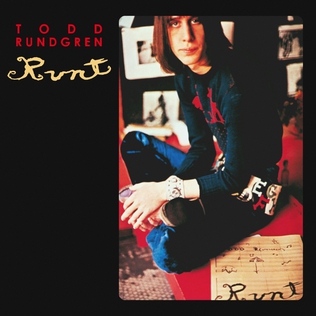
Runt is the self-titled debut album of the band Runt, commercially released September 1970. Runt was a trio consisting of Todd Rundgren, Hunt Sales (drums), and Tony Fox Sales (bass). The entire album was written and produced by Rundgren, formerly of Nazz, and he performed most of the instruments. Many regarded Runt as Rundgren's debut solo album, and later reissues credit the album to Rundgren rather than to the group.
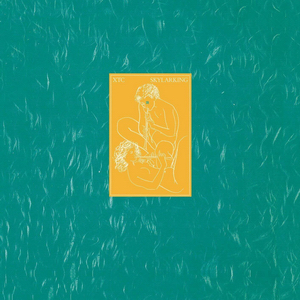
Skylarking is the ninth studio album by the English rock band XTC, released 27 October 1986 on Virgin Records. Produced by American musician Todd Rundgren, it is a loose concept album about a nonspecific cycle, such as a day, a year, the seasons, or a life. The title refers to a type of bird (skylark), as well as the Royal Navy term "skylarking", which means "fooling around". It became one of XTC's best-known albums and is generally regarded as their finest work.
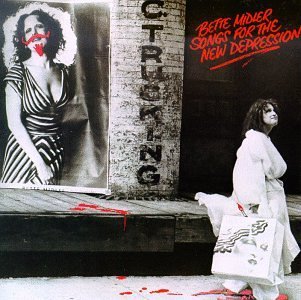
Songs for the New Depression is the third studio album by the American singer Bette Midler, released in early 1976 on the Atlantic Records label. The album was released on CD for the first time in 1990. A remastered version of the album was released by Atlantic Records/Warner Music in 1995. A limited edition remastered version of the album was released by Friday Music in 2014.

"Do Ya" is a song written by Jeff Lynne, that was originally recorded by The Move, which became a hit for the Electric Light Orchestra in 1977.

Back to the Bars is a live album by rock musician Todd Rundgren, which was released as a double LP in 1978.

Another Live is a live album by the progressive rock band Utopia. It was recorded in August 1975 and released in 1975 on Bearsville.
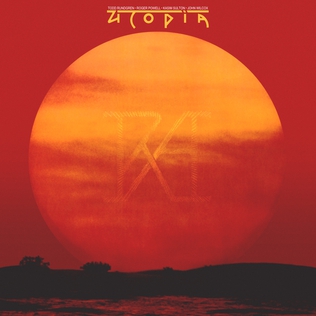
Ra is the second studio album and third release by Utopia on Bearsville Records, released in 1977. Band leader Todd Rundgren planned on releasing the LP in 1976 on his own label, Ethereal Records, as the new four-piece line up was not signed to Bearsville. Replete with an elaborate $250,000 stage show featuring a 22-foot-tall (6.7 m) pyramid and golden sphinx which took 18 months of prep, Ra was Rundgren's most ambitious live undertaking.

Todd Rundgren's Utopia is the debut album by the American rock band Utopia, released in October 1974 on Bearsville Records. The band was formed in 1973 by musician, songwriter, and producer Todd Rundgren who decided to expand his musical style by moving from pop-oriented rock towards progressive rock. He assembled a six-piece group that featured three keyboardists and toured as a live act. Most of the album was recorded in the studio except "Utopia", the opening track, which was recorded live in concert April 25th, 1974.
Mark "Moogy" Klingman was an American musician and songwriter. He was a founding member of Todd Rundgren's band, Todd Rundgren's Utopia, and later became a solo recording artist, bandleader and songwriter. He released two solo recordings, and his songs have been covered by artists as wide-ranging as Johnny Winter, Carly Simon, James Cotton, Thelma Houston, Eric Clapton, Barry Manilow and Guns N' Roses. He played on stage with Jimi Hendrix, Chuck Berry, Luther Vandross, Lou Reed, Jeff Beck and Allan Woody & Warren Haynes of the Allman Brothers and Gov't Mule. Other than Rundgren, his longest musical association may have been with Bette Midler, for whom he served as band leader and who adopted for her signature song "(You Gotta Have) Friends", composed by Klingman and William "Buzzy" Linhart.

"Hello It's Me" is a song written by American musician Todd Rundgren. It was the first song he wrote, and was recorded by his group Nazz as a slow ballad, released as the B-side of the band's first single, "Open My Eyes", in 1968. A mid-tempo version of "Hello It's Me", recorded for Rundgren's 1972 solo album Something/Anything?, was issued as a single in 1973, reaching No. 5 on the Billboard Hot 100 chart.
"Couldn't I Just Tell You" is a song written by American musician Todd Rundgren that was released on his 1972 album Something/Anything?. In July, it was released as a single and reached number 93 on the Billboard Pop Singles chart. The song is considered influential to the development of the power pop genre.

"I Can't Take It" is a song by the American rock band Cheap Trick, which was released in 1983 as the second single from their seventh studio album Next Position Please. The song was written by Robin Zander and produced by Todd Rundgren.



















